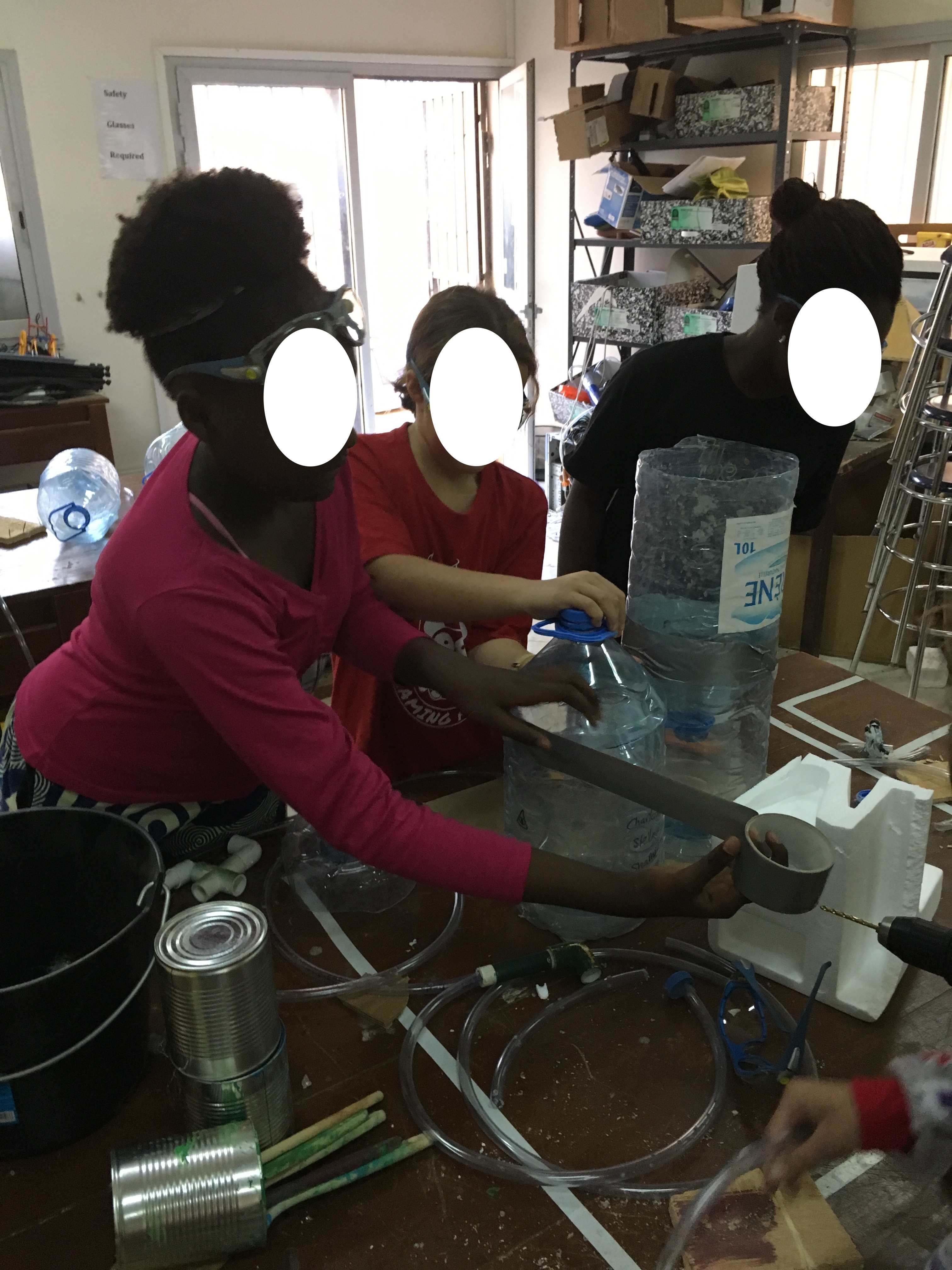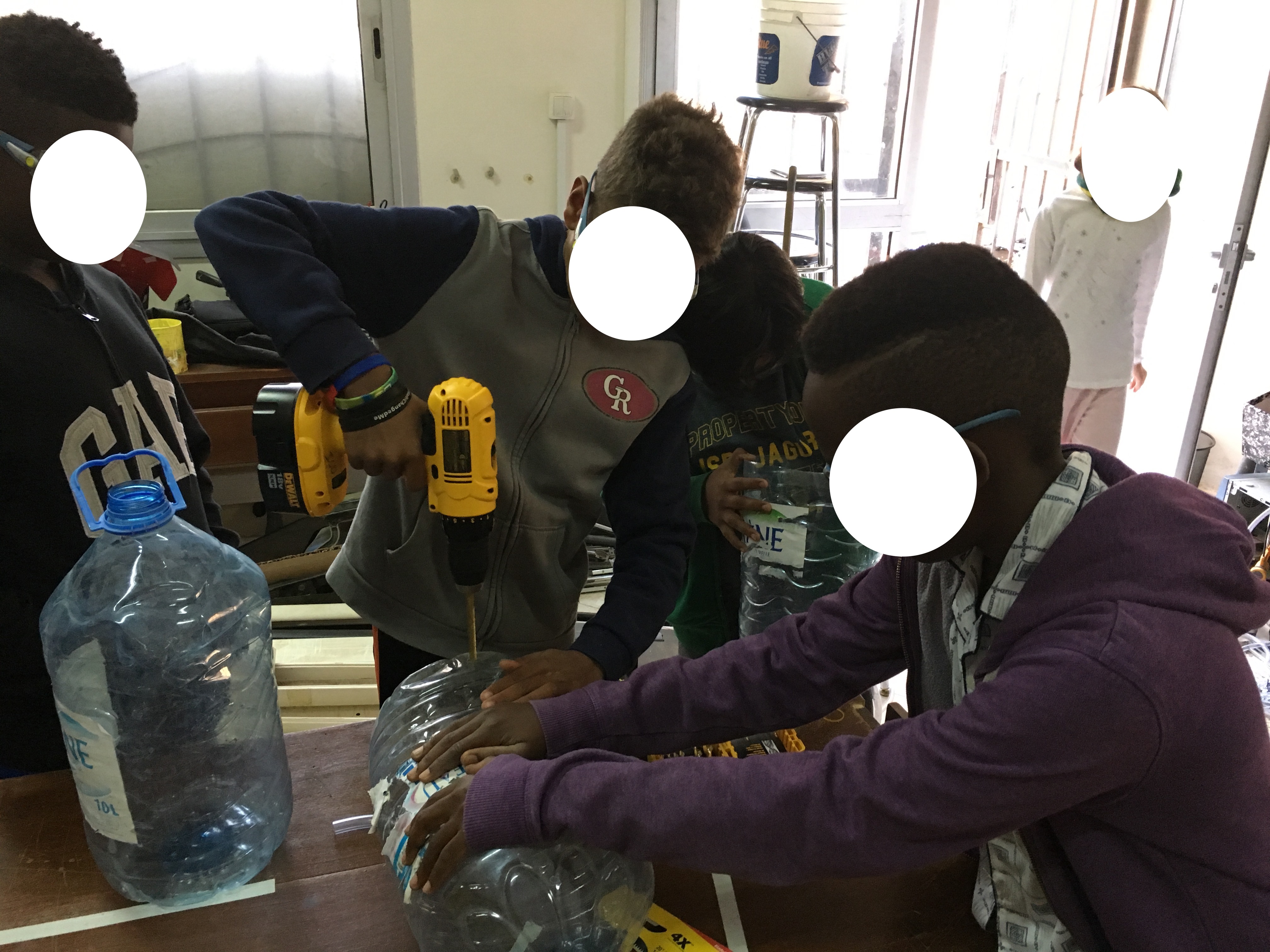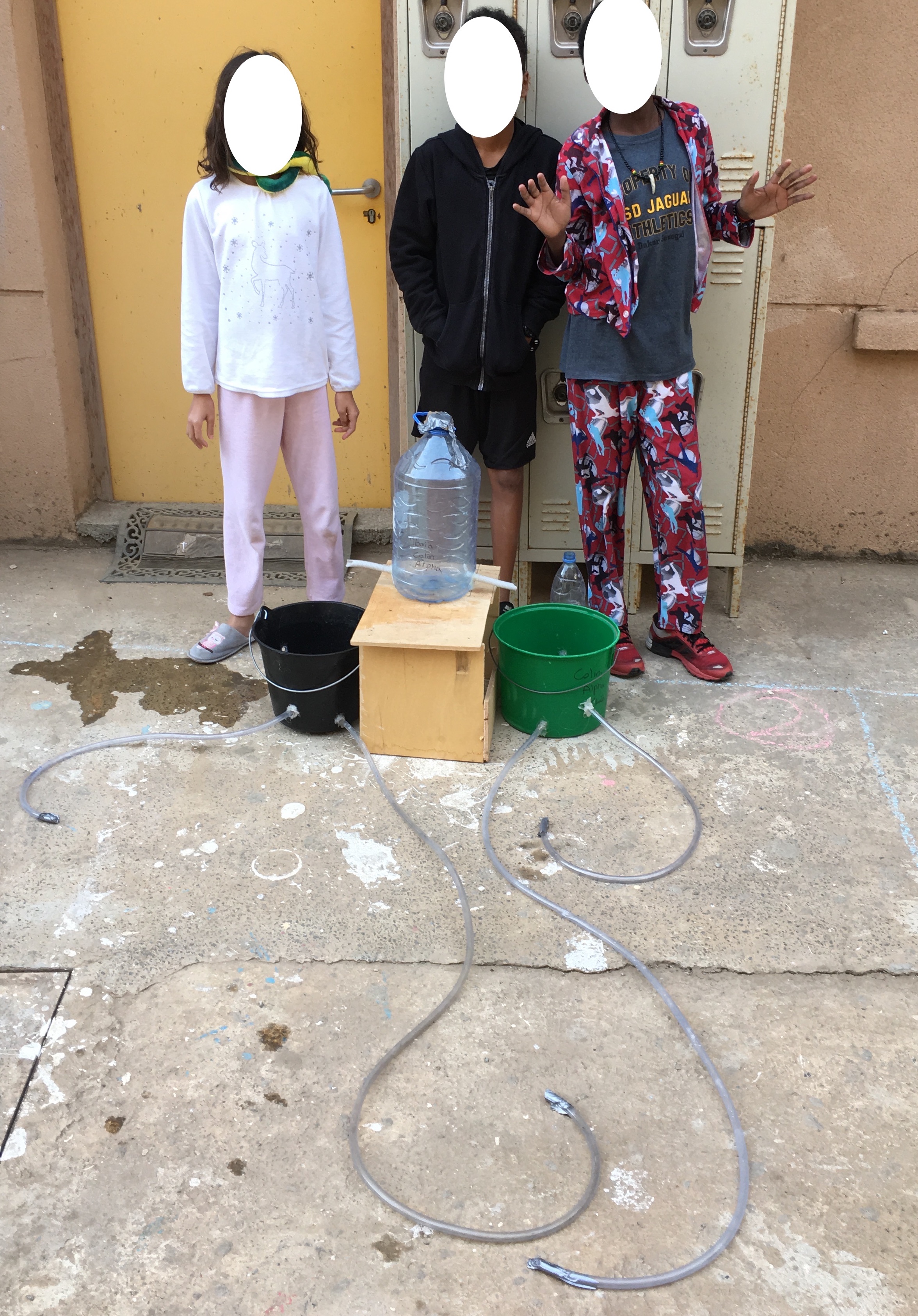While teaching about early civilizations in grade 6 social studies, our students learned the importance of rivers, silt, and irrigation in our societal shift towards farming and sedentary lives. As we live in the Sahel, where fresh water is scarce and droughts are common, irrigation is also an important practice in our communities.
Using our school Makerspace, some specific materials, and a little background research, students were required to build a small-scale irrigation system that would provide small amounts of water continuously to our school garden without needing a person to do something each day (outline of the challenge).
The students were required to plan out their design, work together as a team to build the system, test it, make changes as necessary (part of the design process), and then demonstrate their creation. Each class then voted on the irrigation system they believed worked best, and that was the one we installed in the garden. The students were required to write a reflection, tying in what we learned in class to their experiences, and reflect on their learning process during the assignment (checklist and outline for the reflection).
The students loved the assignment, though they struggled with using their time effectively, working collaboratively, and brainstorming ideas. The next time I do a large construction assignment like this, I will make sure to show them examples of how to brainstorm ideas, and how to design and test prototypes (smaller examples of what they are trying to do, before the larger final product). Additionally, before construction, I will help the students practice communicating during disputes, and help the students assign roles during the project.
Some of the reflections created by the students were excellent. Here is an example reflection created by a student, where all identifying information has been removed: student exemplar.





 Follow
Follow